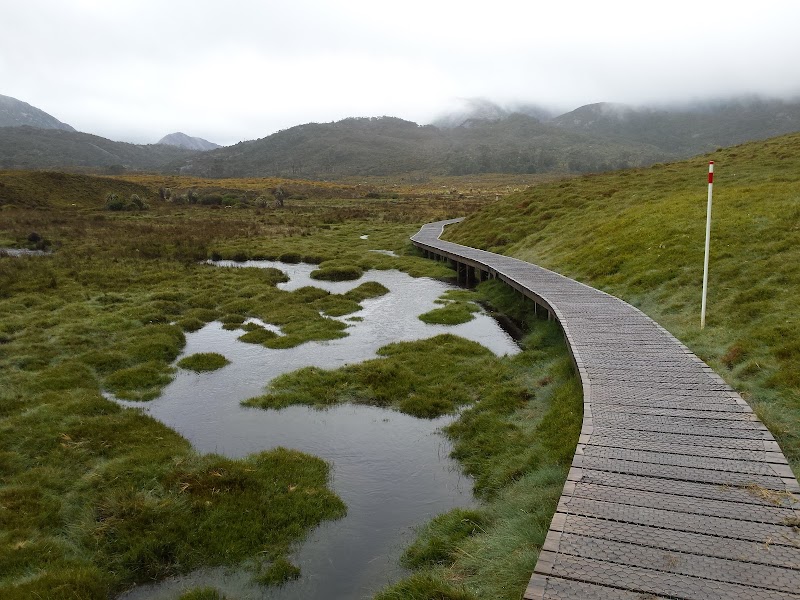
Sorell Creek Trout Classic: A Practical Adventure in New Norfolk’s Wild Hinterlands
The Sorell Creek Trout Classic blends a rewarding hike with prime trout fishing along a pristine Tasmanian creek. Just outside New Norfolk, this trail offers an accessible yet engaging outdoor experience, balancing striking natural beauty with practical fishing and hiking advice.
Wear Good Grip Footwear
The trail includes wet creek crossings and uneven rocky patches; boots with firm soles help maintain safety and comfort.
Bring Adequate Hydration
Though shaded by forest canopy, Tasmania’s variable weather demands consistent water intake, especially in warmer months.
Start Early for Best Fishing
Trout are most active from dawn until mid-morning. Plan your hike to arrive at fishing spots during these hours for greater success.
Carry Insect Repellent
Mosquitoes and midges can become persistent during warmer or damper days; repellent keeps discomfort low and focus high.
Sorell Creek Trout Classic: A Practical Adventure in New Norfolk’s Wild Hinterlands
The Sorell Creek Trout Classic, positioned just outside New Norfolk, Tasmania, offers anglers and outdoor lovers a focused encounter with one of the island's premier trout fishing streams. This 12-kilometer well-maintained track winds alongside the creek, tracing the ripple and rush of cool waters that challenge and invite every angler. Expect a steady elevation gain of about 150 meters, granting access to multiple prime fishing spots where the creek appears to shift and swirl with quiet intent.
Forests crowd the trail with tall eucalyptus and silver wattles, their limbs drawing a green roof that filters Tasmanian sunlight in patches. The creek itself acts like a steady companion, daring you onward as currents push you forward to bends that hide secret pools. Early morning is when the trout take the water most actively; the air hangs crisp, carrying the scent of moist earth and fresh leaves.
This hike is more than just a walk—it's a practical expedition where preparation matters. You'll navigate a combination of compact dirt track and occasional rocky sections, suitable for well-gripped footwear and steady footing. Lightweight, waterproof boots will shield you from early dawn dew or occasional creek crossings. Hydration is essential, especially in warmer months when the creek's cool promise can be deceiving.
Sorell Creek itself demands respect; its waters teem with trout that are both elusive and aggressive. Fishing requires patience, steady hands, and a basic set of fly fishing gear or light spinning tackle. There are marked spots that manage fishing pressure well, ensuring a balanced interaction between anglers and nature.
For those timing their walk, mid-to-late spring through early autumn provides stable weather and the best chance to witness active trout and blooming understory. This period also invites vibrant birdsong as native wrens flit through ferns and moss draped branches.
To prepare fully, pack layered clothing, quick-drying fabrics, and insect repellent. Phones and cameras should be ready to capture the creek’s ever-changing light and reflective moods. The wildlife—black currawongs, wallabies, and sometimes the cautious platypus—makes each pause a moment of natural theatre.
This trail invites all—from casual day hikers seeking quiet connection with Tasmania’s outdoors to seasoned anglers looking for the thrill of the catch amid fiercely natural surroundings. It’s an invitation to challenge yourself respectfully, knowing the creek will always have the last word, flowing on and creating stories for those willing to listen and learn.
Nearby Trips
All Adventures
Boat Charters
Water Activities
Adventures near New Norfolk, Tasmania
Discover the unique and memorable adventures that make New Norfolk, Tasmania special.
Frequently Asked Questions
What is the best time of day to fish in Sorell Creek?
Early morning, from sunrise until mid-morning, is when trout are most active. The cool water temperature and low light encourage feeding, maximizing your chance for a catch.
Are there any difficult creek crossings on the trail?
Most creek crossings are shallow but can be slippery. Waterproof boots with good grip are advised; in periods of heavy rain, crossings can become less stable and require caution.
Is fishing permitted all year round in Sorell Creek?
Fishing is permitted year-round, but the trout tend to be more active from spring to autumn. Check local regulations and seasonal restrictions before your trip to ensure compliance.
Can this trail be completed as a day hike without fishing?
Yes, the trail offers a pleasant 3-4 hour hike for those who wish only to experience the creek and forest scenery without fishing.
Are there facilities or signage along the trail?
The trail is marked clearly with some signage at key junctions. However, facilities are minimal, so come prepared with water, maps, and appropriate supplies.
What wildlife can I expect to see around Sorell Creek?
Keep an eye out for platypus in the quieter pools, black currawongs perched in tall trees, and wallabies darting through the bush. Birdsong is particularly prominent in spring and summer.
Recommended Gear
Waterproof Hiking Boots
Protect your feet from wet creek crossings and rough terrain, providing grip and support throughout the trail.
Layered Clothing
Wear breathable layers that adapt to changing Tasmanian weather and temperature swings along the creek.
Insect Repellent
Keep biting insects at bay, especially on warm spring and summer days when they become more aggressive.
Fishing Gear
If angling, carry fly fishing rods or light spin tackle to engage with the creek’s thriving trout populations.
Local Insights
Hidden Gems
- "The creek’s east bend offers a secluded viewpoint where the water slows into deep fishing pools."
- "A small waterfall near the trail’s midsection provides an atmospheric spot favored by local photographers."
Wildlife
- "Platypus (often seen in early morning or late evening)"
- "Black currawongs"
- "Eastern grey kangaroos"
History
"Sorell Creek lies within traditional territories of the Aboriginal people of Southern Tasmania, with the area historically used for fishing and seasonal gathering."
